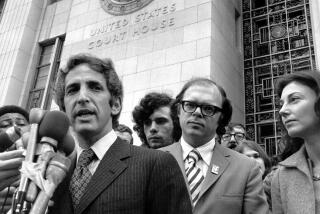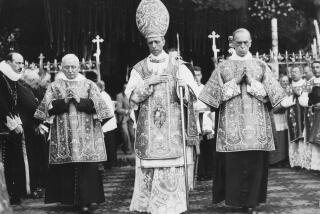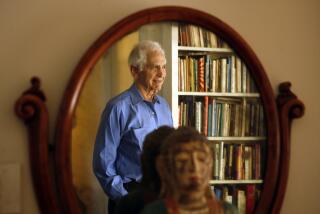New, Damning Data in Old Spy Case
- Share via
For most Americans younger than, say, 55, mention of the once notorious Rosenberg spy case recalls little more than a half-remembered line or two in the standard history texts. But in the early 1950s and indeed for years after, the case--involving the conviction and execution of Julius and Ethel Rosenberg on charges of passing atomic bomb secrets to the Soviets during World War II--was a national as well as an international cause celebre . Objective opinion would have to conclude that the preponderance of evidence strongly supported the Rosenbergs’ conviction. To that weight has now been added still more powerful documentary evidence, withheld until now by the government’s often excessive and obsessive concerns about secrecy.
This week a number of pieces of information were released: KGB messages intercepted and decoded during World War II pointed to Julius Rosenberg as one who recruited other espionage agents and photographed secret documents for Moscow; Ethel was said to be knowledgeable “about her husband’s work.” All this provides a strong link in the evidentiary chain against the couple. These documents further illuminate the extent of Soviet atomic espionage in the United States. Scores of Americans working for Soviet intelligence apparently were assigned to steal nuclear secrets.
The partial breaking of the Soviet code that led to the identification of the Rosenbergs required years of tedious effort by a small group of dedicated cryptanalysts working in what was known as the Venona project. Until this week, when the surviving members of the group at last received public recognition, they kept the secret of their achievements. Why the National Security Agency, which intercepts and decodes foreign intelligence communications, waited so long to release the Venona material is a bureaucratic mystery. The Soviet Union, after all, knew by 1949 that its code was no longer secure.
Release of the Venona papers argues for more and faster declassification of other key historical documents from the early Cold War period. The main reason for keeping such material secret is to protect sources. Forty and 50 years after the event, such protection is seldom justified. To prolong secrecy beyond that period of real need is an abuse of power in our open society.
More to Read
Sign up for Essential California
The most important California stories and recommendations in your inbox every morning.
You may occasionally receive promotional content from the Los Angeles Times.










